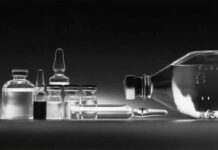Throughout the last four to five years, there has been a persistent problem, which was noted by Willus Fisher, a doctoral candidate at UC Santa Barbara, while teaching pharmacology to students.
He remarked that each year, he reiterated the trade-offs of precise dosing with an IV as opposed to an oral pill, in which one cannot control the medication concentration levels within the blood very well. This problem, apparently, was nailed in his mind. The fact is that it isn’t a new problem, and it is indeed well known that for more urgent effects, intravenous delivery happens to be the best. The point is that IV offers the drugs a direct route into the bloodstream by way of bypassing the gut gauntlet, and hence less of the drug is required, and the dosages can be measured as well as altered in real time throughout the infusion.
However, oral delivery happens to have its own advantages: it is much more convenient and requires no time in the patient’s chair. Apart from this, there is a potential for injection that’s avoided in addition to vein damage and also blood clots.
But once the pill gets swallowed, the drug has to go through the digestive tract, and it is quite a challenge to ascertain how much goes into the bloodstream; hence, it is indeed not possible to control the concentration once it is there. It is well to be noted that every year, this kind of imprecision happens to take the lives of almost 9000 people across the US and also results in 1.3 million patient injuries, which can be avoided. All this happens to cost the healthcare system around $40 billion.
Fisher had been focusing on these issues at the time he met Aria Ghasemizadeh, who happened to be a doctoral student within the biomolecular science and engineering graduate program, and turned out to be also looking into the problem of how to take advantage of the advantages of both worlds, i.e., the benefits and comfort of a pill as well as the precision of an infusion. In scenarios where hospital access happens to be minimal, like with field medicine as well as search and rescue operations, fast and precise delivery of drugs happens to be one less uncertainty in an environment that is consistently shifting.
Ghasemizadeh says that if one could blend precision with portability in a drug dosing platform, there could be access to technology that offers unmatched benefits to the field of medicine as well as medicine as a whole. Not just these outside hospitals would be able to get the medicine on demand, but they would also get it with precision that’s of hospital standard.
Fortunately, there was an idea wherein a device could go on to activate isolated drug molecules within the blood stream as required and, at the same time, non-invasively track the drug’s activation.
As soon as the system was being described, there happened to be an IV drip, which was a thousand times enhanced, said Fisher. And right from there, the pair went on to join forces so as to develop a device like this while at the same time going ahead and sharpening their business acumen through the Technology Management Program at UCSB. The inference was a wearable device that consistently monitored and controlled the drug molecule concentration just so that the potency, by way of a shot or a pill, could go on to get optimized while at the same time reducing any adverse effects.
The key when it comes to this technology is the mix of light as well as a drug-entrapping nanoparticle carrier. The fact is that when exposed to light coming from the wearable penetrating the skin, the drug molecules within the blood stream that have been closed in the nanoparticles start to break open, thereby releasing the drug in a concentration that is kind of large enough to be quite effective and not excessive. If the device, on the other hand, monitors the right levels of drugs within the bloodstream, whatever excess there is remains closed within the nanoparticle and, at the end, gets eradicated by way of the waste system of the body sans being released.
There are similar technologies that have been created which happen to control where the drugs are to be released within the body. If the accumulation of the carrier could be achieved at a particular physiological site, it could be zapped with some kind of external stimulus and also release the drugs where they actually need to go, says Fisher.
This can be especially useful at times of chemotherapy when it comes to solid tumors. This strategy has been adopted in combination with wearables so as to attain the required drug concentrations across the body, enabling its usage for a variety of diseases that go beyond solid tumor cancers.
There are advantages that still go further. Thanks to the capacity to track as well as program the drug release in the blood stream, patients could as well go on to spend less time within the clinical setting, which can in a way lead to reduced bills as well as enhance the quality of life. Hospitals as well as clinics, on the other hand, can go on to avoid the high cost of dosage errors while at the same time delivering patient care that’s of high quality.
This kind of promising tech still happens to be in its infancy, but it has already gone on to get praise from the Technology Management Program, with both Ghasemizadeh and Fisher taking second place when it comes to the Technology Push category at the annual New Venture Competition by TMP.

















![Sirio Launches Global Research Institute for Longevity Studies [SIA]](https://www.worldpharmatoday.com/wp-content/uploads/2019/09/Sirio-218x150.jpg)

